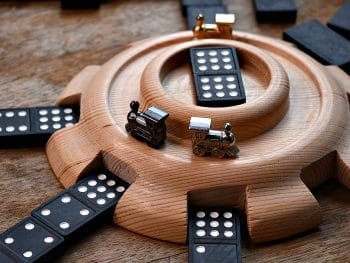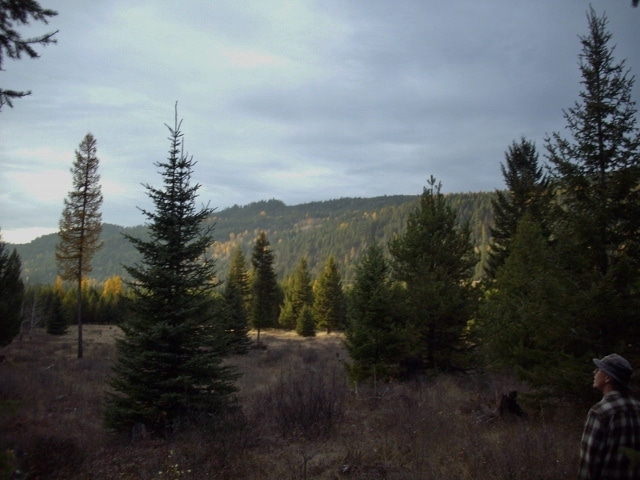As an occasional fisherman I don’t always have all the fishing gear that I need or want. However, I always have a fish bonker. A fish bonker helps the fisherman speedily and efficiently dispatch a fish that has just been caught. There are lots of names for this type of wooden club. Common names in North America are a fish bonker, a fish bat, a club, and a whacker. Some names are more unusual.
A fellow turner posted to a woodturning group that he was going to go and turn a few fishing priests. Since I wasn’t sure what he meant I asked him. He explained that he was from England and a “Fishing Priest” was a turned tool used to efficiently dispatch fish that you were keeping. I guess the priest part is giving the fish its last rites.
I have turned a few good sized spindle projects and they could be used in a similar fashion. It has been suggested that a Kraut Pounder would be really good for larger fish. At shows where I was selling ball winders the gentlemen who were perusing the booth frequently suggested a sporting application for the winder. (Make sure you clean it well before handing it back to your wife’s knitting basket!)
Design Considerations for a Fish bonker
The use of this tool is to efficiently dispatch a fish. In my area lake fishing is common and the fish are not huge. So in my case a completely wooden fish bonker would be sufficient. Some turners like to add weight to the head. Given that you will be using this outdoors I would recommend staying away from actual lead. However, something heavy in the head would work. If you are adding weight to your fish bonker then you need to remember to include that in the price you set for your work.
You want your tool to be easy to hold and use. Your other hand is holding the fish and you don’t want to bonk yourself, just the fish. Your hands and the tool could be wet so the two beads on the handle will help you keep it under control. At least with a wooden fish bonker it will float if it falls into the water. You could also drill a ¼” hole through the handle and tie a leather strap on it as well. The strap would go around the fisherman’s wrist.
Since there will be physical impact with the tool you want to make the center portion fairly solid rather than too thin. So a good hefty tool is what you want to produce. Hardwood (Birch, Maple, Oak) will give you heavier wood that a softwood (Pines, Firs, Cedars). So find a good heavy deciduous tree in your area for your turning blank.
Turning Process for making a Fish bonker
For this project I grabbed a piece of birch firewood. The length is 12” with just less than 4” for the head and the handle, and the rest in the middle for the shaft. I wanted the head to be fairly smooth and flat. The shaft in the middle could be fancy or simple depending on your turning preferences. The handle has two beads to keep it from slipping from your hands.
1. Turn Your Blank Round
Mount your blank between your head stock and tail stock. Make sure it is secure. Use your spindle roughing gouge to turn the blank round.
2. Mark the Desired Dimensions on Your Blank
I like to mark out the key features of the project that I am turning. It gives me a feel as to where everything goes and the necessary spacing. Even though these marks will be turned away it will give you a visual idea of where the handle and head goes and how you want to transition between the two.
3. Shape and Smooth the Head
My idea for the fish bonker was to have a smoothly shaped head that was just slightly rounded. I had hoped for about 2” in diameter but my wood turned out just a bit smaller.
4. Shape and Smooth the Shaft
The shaft transitions between the head and the handle. I used smooth flowing lines with just a slight notch for emphasis near the handle. You can shape the shaft area any way you like. Don’t turn it too thin or it won’t last as a tool.
5. Shape and Smooth the Handle
The handle needs to be a shape that people will be comfortable holding. I did add two beads to define the handle and to help keep the handle from slipping out of the user’s hand.
6. Add Some Burn Lines as Decorations
To make the turning interesting you can add beads or embellishments just about anywhere. I added three burn lines to the head for interest.
7. Sand Your Project
I used my normal sanding procedure for this project. I started with 220 grit sandpaper and worked my way up to 800 grit. Remember to wipe the turning off every time you change the grit size of your sandpaper.
8. Finish Your Fish bonker
A Danish oil or Tung oil finish would be suitable for a fish bonker. As I didn’t have either of those on hand I used a wood polish to finish the project.
9. Part your Fish Bonker off of the lathe
The bonker is mounted between your drive center and your live center in the tail stock. To part off the lathe take your parting tool and slowly cut away the wood supporting the tail stock and head stock ends of the turning. Work each end down in small increments. When you have the tail stock just about parted off move to the head stock and completely finish parting the fish bonker off of the lathe. Hold the parting tool in one hand so the other hand can catch the bonker as it is separated and stops turning.
If you are nervous about separating a large turning from the lathe then stop and take the bonker off of the lathe and use a band saw / carving knife to smooth out the head and the handle. Remember to sand and finish as well.
This is a simple turning project with lots of room for creativity. You can look through google images or Pinterest to see how other turners have shaped their fish bonkers. So find a good sized turning blank, plan out your project, and get those chips flying!
Turning For Profit
If you have any questions about turning a fish bonker please leave me a comment at the bottom of the page. Similar turning projects would include a ball winder and a garden dibbler. These are a bit smaller and don’t have to be heavy to be used.
I love wood turning and sharing with you. Thank you for letting me join you on your woodturning journey. Have fun and remember to always turn safely.










Hi there – could you also use a mini baseball bat if you generally fish smaller guys? Trying to buy a gift as the mini baseball bats can be personalized but want to make sure it will still be functional. Thanks!